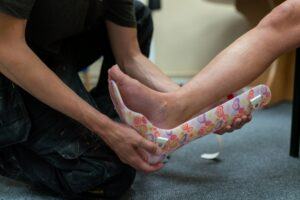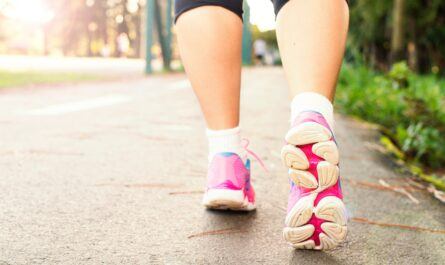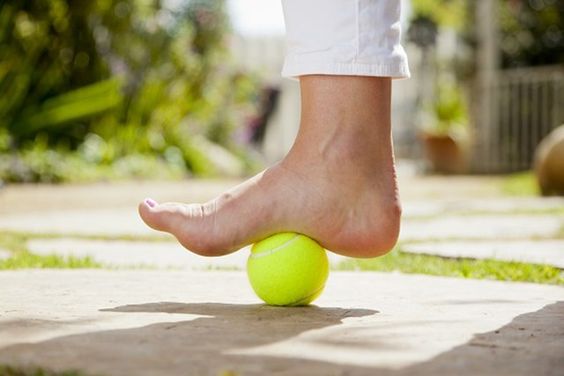Many runners suffer from Achilles Tendonitis, an injury at the back of the heel, near the bottom of the calf. To ease discomfort and speed up recovery, you may want to try some home treatments. Self-care strategies are also useful to prevent recurring injuries. When you suffer from severe pains though, or when the complaints persist longer than 2-3 days, please consult a physiotherapist or a podiatrist for medical advice. You may have a torn (ruptured) Achilles tendon.
What is Achilles Tendonitis?
The Achilles tendon is a tough band that connects the heel bone with the calf muscles. It aids in the movement of the foot during running, walking, and jumping. An inflamed Achilles tendon is called Achilles tendonitis, which causes pains in the affected area.
Symptoms
Pain just above the heel, at the bottom of the lower leg, is the most prominent symptom of Achilles Tendonitis. It typically starts as a mild ache after running or other sports activities. More-severe pain may occur after a long run, hill or stair climbing, or intervals with high-speed sprints.

You might experience more pain, stiffness, and tenderness when you try to stand-up, after sitting down for a while. Not being able to put the foot flat on the ground in the morning, after a night sleep is also a common symptom, which usually improves with mild activity.
 Causes
Causes
Achilles tendonitis is often a result of over-use and caused by repetitive or intense strain on the Achilles tendon. The most common causes and risk factors are:
- Lack of warming-up and stretching: starting a workout without any muscle preparation by a warm-up and gentle stretch, may increase the risk of getting injured.
- Age: Achilles tendonitis is more common when we get older, as the structure of our Achilles tendon weakens with age, which can make it more susceptible to injury.
- Physical: People with flat feet (a naturally flat arch of the foot), tight calf muscles, and people with a high BMI may be prone to developing Achilles Tendonitis, as these factors will increase strain on the Achilles tendon.
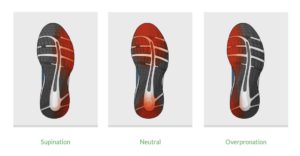
- Wrong shoes: Running in worn-out shoes or in shoes that don’t support where you need it, can increase the risk of Achilles tendonitis. Check out my article on “choosing the right running shoes”
- Cold Weather: injuries occur more frequently in cold weather than in warm weather,
- Training schedule: If they have started to run too many running miles, at a too intense level or too often all of a sudden, you are increasing the risk of getting injured. Always follow a gradual training schedule to help the muscles adjust to more, faster, and longer runs.
- Surface: Also be aware of running on a hilly or uneven terrain. This may predispose you to Achilles tendonitis.
 RICE first
RICE first
The classic RICE approach to injuries is the best start for treating Achilles tendon pain at home. Rest: Avoid any activity that may further strain the Achilles tendon. Ice: Icing the affected area for at least 15 minutes to reduce swelling and ease pain. Compression: Use a bandage to apply gentle compression to keep the tendon from moving and to reduce swelling. Elevation: Raise the foot above the level of the heart when you’re sitting or lying down to help reduce swelling
At Home treatment Achilles Tendonitis
You may like to take over-the-counter anti-inflammatory and pain-relieving drugs, such as ibuprofen or Naproxen. Before taking any drugs, always ask your GP or pharmacist for professional advice.
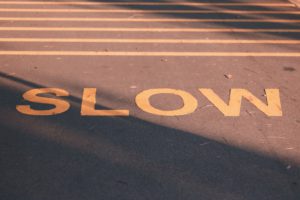
As the Achilles tendon is irritated and inflamed, it needs time to heal. Instead of running, you can choose other physical activities and exercises, that don’t require using the Achilles tendon. Stretching of the tendon is not recommended until all symptoms have resolved.
- Elastic Bandages: apply elastic bandages to reduce the amount of stress and to decrease swelling and pain.
- Heel straps: might protect the most painful area at the Achilles tendon from the back of the shoes to rub or push against it.
- Gentle self-massage: massaging the Achilles tendon area and the calves with a massaging oil will help increase circulation, relax the muscles, and reduce swelling and stiffness.
- Castor Oil: topically apply castor oil to the pain location 2-3 times a day to the Achilles tendon area. One of the ingredients, ricinoleic acid, is an anti-inflammatory agent. This will help relieve pain and minimize inflammation of the tendon.
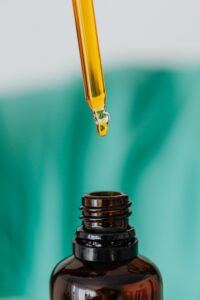
- Vitamin E: Vitamin E also improves circulatory function, which reduces swelling and promotes healing.
- Ankle support: wearing an ankle support band or sock may help to support the foot and ankle position.
- Foot analysis: have the gait, level of pronation, and the running style measured at a professional runners store. This will help you choose the right running shoes with the support and protection that the feet need! Extra supportive insoles are usually also available when you need them.
When to consult a medical doctor or specialist?
If the home treatment doesn’t help, and the pain still remains or the symptoms even get worse after 2-3 days, it’s time to see a physiotherapist or a podiatrist. A physical examination of the feet and ankles may follow, including X-rays or an MRI scan, to rule out other issues, such as a (stress) fracture or a torn tendon.
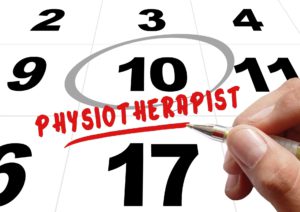
Definitely don’t wait longer than a week, as Achilles Tendonitis can weaken the tendon, making it more vulnerable to a tear (rupture), which is a much more painful injury. Medical treatment will usually focus on pain relief and preventing further injury. Sometimes the foot needs to be temporarily immobilized with a brace or boot, for the tendon to heal. In some cases, medications will be prescribed, such as steroids or NSAIDs.
Prevention of re-developing Achilles Tendonitis
After injury, you’d probably want to get back to running as soon as possible. But just remember: prevention is better than recovery! To decrease the chance of re-injuring yourself, you may be medically advised to wear custom orthotics. Not only in the running shoes, but in the everyday shoes as well. These will help control the motion of the feet and reduce stress or strains.
You can take the following measures to reduce the risk of re-developing Achilles tendonitis:
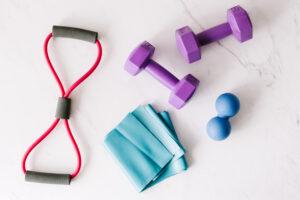
- Rehabilitation: It is recommended to increase the activity level step-by-step. Start slowly and gradually increase the duration and intensity of the training. Our Morefun2run article “back to running after injury”, with a walk & run rehab schedule will gradually get you back to the previous running level.
- Take it easy. Avoid activities that cause excessive stress on the tendons, such as hill running or stairs climbing. Never skip the warm-up and run at a slower pace. If you notice pain, stop, and rest.

- Flexibility exercises Include runners yoga and/or stretching to the training schedule to increase the Achilles tendon’s and calf muscles flexibility. Take the time to stretch in the morning, before exercise, and after exercise to maintain flexibility.
- Strengthening training: enable the calf muscles and Achilles tendon to better handle the stresses they encounter with activity and exercise. Check out our Morefun2run basic strengthening exercises.
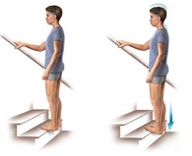
- Wear the right running shoes: that provide adequate cushioning for the heel and have a firm arch support to help reduce the tension in the Achilles tendon. Check out our article “choosing the right running shoes”.
- Alternate physical activities: Alternate activities that have a high-impact on the Achilles tendon, such as running and jumping, with low-impact activities, such as cycling and swimming.
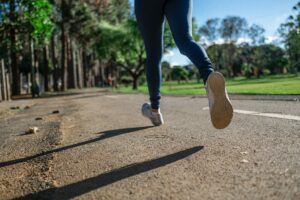
If you are currently suffering from Achilles Tendonitis, I wish you a speedy recovery! I hope this article was useful to you. Should you have any further questions, please send me an e-mail an*******@mo*********.com or leave the comment below and I will get back to you. Please share by clicking the social media buttons. Thank you!



